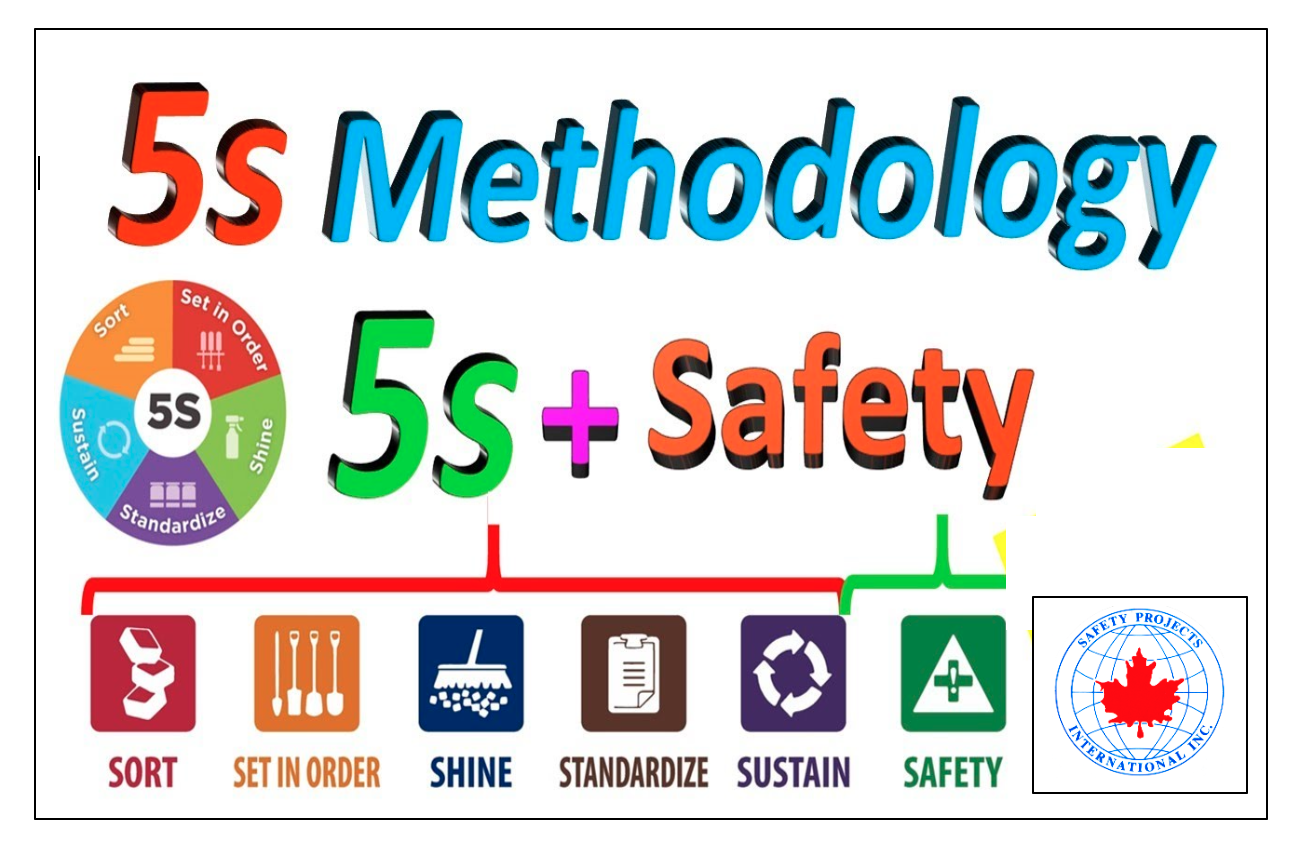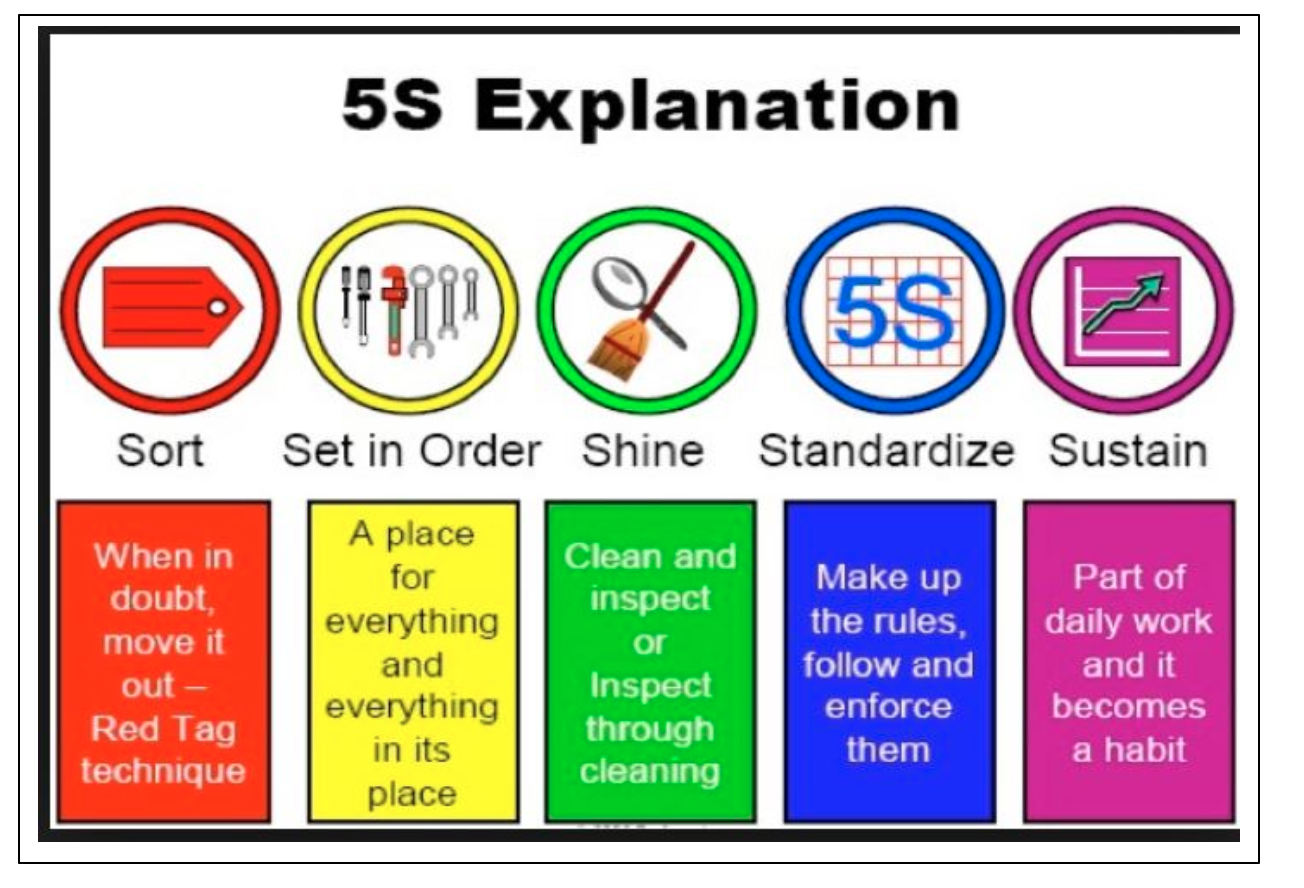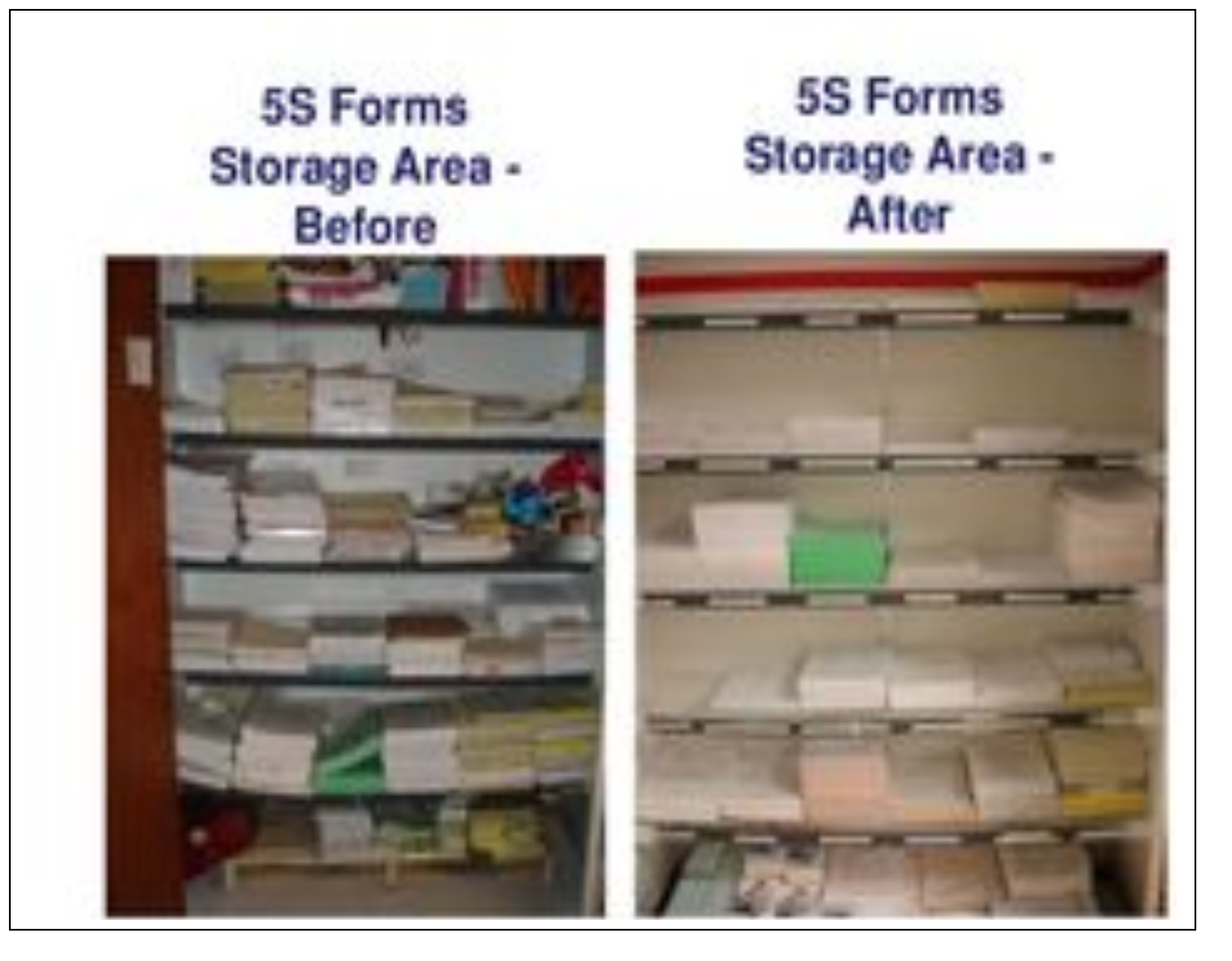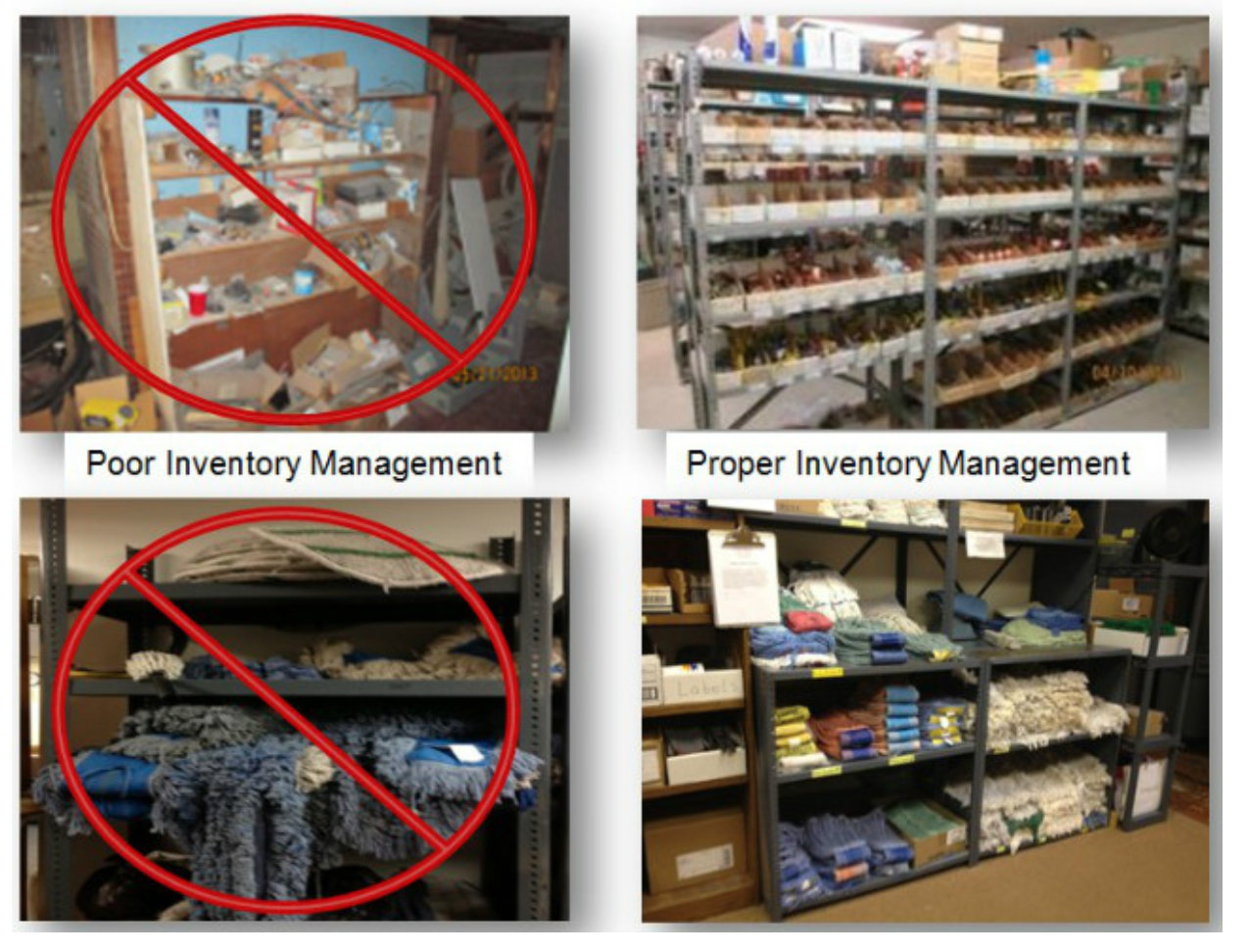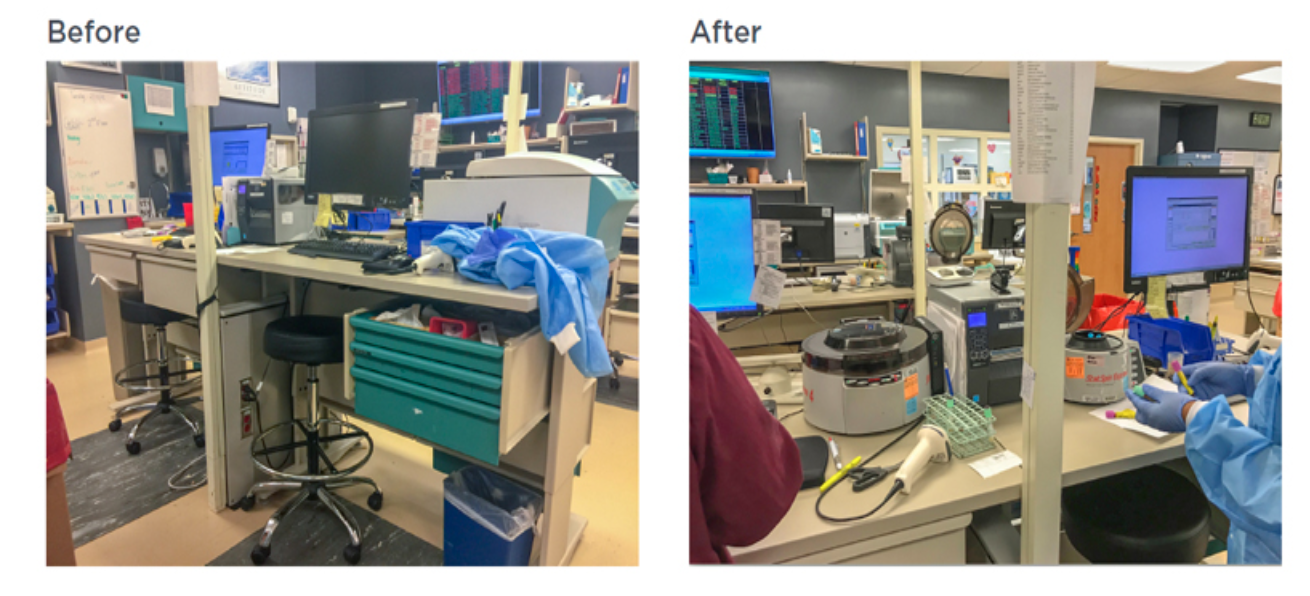 The five in a 5S workplace organizational and housekeeping methodology refers to five steps – sort, set in order, shine, standardize and sustain. Safety should be the honorary sixth “S.
The five in a 5S workplace organizational and housekeeping methodology refers to five steps – sort, set in order, shine, standardize and sustain. Safety should be the honorary sixth “S.
Many manufacturing facilities have opted to follow the path towards a “5S” workplace organizational and housekeeping methodology as part of continuous improvement or lean manufacturing processes. The term refers to five steps – sort, set in order, shine, standardize and sustain – that are also sometimes known as the five pillars of a visual workplace.
The 5S methodology is a simple and universal approach that works in companies all over the world. It is essentially a support to such other manufacturing improvements as just-in-time (JIT) production, cellular manufacturing, total quality management (TQM) or six sigma initiatives and is a great contributor to making the workplace a safer and better place to spend time.
Key components of the 5S philosophy are safety and good housekeeping practices. Safety is an integral part of the sort, set in order and shine segment of any 5S project. Standardize and sustain refers to methods used to ensure that safety and good housekeeping is maintained.
Check sheets can be used to build good habits in these areas and to ensure good housekeeping is maintained in all areas:
The Five Pillars of a Visual Workplace
5S is a system to reduce waste and optimize productivity through maintaining an orderly workplace and using visual cues to achieve more consistent operational results.1 5S programs usually are implemented by small teams working together to get materials closer to operations – right at workers’ fingertips – and organized and labeled to facilitate operations with the smallest amount of wasted time and materials.
“A place for everything, and everything in its place” could be the mantra of the 5S system.
Implementing the 5S method means cleaning up and organizing the workplace in its existing configuration. It typically is the first lean method that organizations implement. This lean method encourages workers to improve their working conditions (including safety and ergonomics) and helps them to learn to reduce waste, eliminate unplanned downtime and conduct in-process inventory.
A typical 5S implementation results in significant reductions in the square footage of space needed for existing operations. It also results in the organization of tools and materials into labeled and color-coded storage locations, as well as “kits” that contain just what is needed to perform a task.
Table 2 provides an overview of the 5 pillars, with a brief definition of what the step means in a manufacturing context, why it is important, and the list of problems it avoids if implemented.
Three-Step Process for Implementing 5S
The 5S methodology typically is implemented using a three-step process, which includes establishing a cross-functional team (including employees who work in the associated areas), touring all areas associated with the manufacturing processes under review and brainstorming ways to improve organization to reduce waste.
For example, factories usually have a great deal of waste associated with searching for items. It is not unusual for a 3-hour changeover routine to include 30 minutes of searching.
When attempting to reduce changeover time radically (for example, going from 3 hours to 10 minutes), there clearly is no room for 30 minutes of searching waste.
Value stream mapping (VSM) can be used in the 5S process to analyze the material, process and information flow. The information is used to develop a current state map, which sets out how things have been done in the past. The team then analyzes the current state map to identify opportunities for workplace organization, safety and housekeeping improvements.
A wide range of ideas is considered; while all ideas won’t end up being viable, all are worthy of investigation. The key is to observe non-value-added processes and create an environment to promote value-added work through waste elimination. For example, safety identification is a key issue mapped during the VSM process. For each process step, data is collected on opportunities for safety or ergonomic improvements, in addition to tooling requirements, equipment requirements, materials required, travel distances and information requirements.
For example, team members might observe workers walking long distances to obtain needed parts, or spending time reaching into bins on shelves to find parts. Or they may identify hardware, like nuts, bolts and screws that are used in a certain area but stored in a central storage facility far away from the point of use. The goal of the VSM is for the team to walk the process, and identify what operators really need versus what they receive.
Finally, the team envisions a future state based on the exercise and begins implementing the future state. The process is iterative; the future state becomes the current state, and a continuous improvement process should be used to identify new ways to reduce waste. Waste is defined very broadly and includes things like waste in the movement of material, carrying too much inventory, defects or rework, injuries caused by poor organization or producing scrap. If a worker trips and falls because boxes of supplies are left in a walkway, that injury is considered waste. If materials are not returned to their proper place and employees spend time searching for them, that is waste. Building defective products because defective parts were not identified and removed from the process also is waste.
Simple tools and aides can be used to reinforce the lessons learned in the VSM process, and good housekeeping practices form the basics of this effort. Half the activities called out in the monthly 5S Check Sheet for an assembly process are basic, but essential, good housekeeping practices. Items 1 through 6 – put away; organize work in process; sweep; empty trash; dust, wipe, clean; and mop – set the stage for other assembly activities that reduce waste, such as turn off machines, turn off accessories, turn off air, lock doors and turn off area lights.
Audits can be conducted to review 5S progress processes from level 1 (initial effort) to level 5 (habit). In the “Shine” category, for example, the goal is to have a system in which work area housekeeping is a routine way of life and corrective action measures are in place to address cleanliness issues.
Safety also plays an important role in the 5S audit process. Standard worksheets are developed for each process to help make a factory more visual, highlighting safety precautions for each cell, in addition to showing where all work in process should be located.
The safety precautions presented on the standard worksheets typically are those resulting from the risk assessment process, a structured approach that results in a ranked listing of the risks involved for each activity.
The risk assessment process reviews the severity of occurrence (the possible injuries or damage to health that may occur if the potential risk happened); the likelihood of occurrence (an estimate of how likely it is that an accident or situation will happen); and the number of people at risk. Risk is calculated by multiplying the severity x likelihood x number of people, to arrive at a risk priority number (RPN). RPNs are compared for each activity to determine the priority for action. Elimination and prevention of risks are the preferred activities, with provision of personal protective equipment considered short-term measures.
Safety and Storage
Storage solutions play an important part in implementing waste elimination, one of the key pillars of 5S. Safety and good housekeeping principles particularly are important when it comes to storage. An effective storage solution gives the ability to store many items close to the operation, and a visual labeling system makes it easy, quick and safe to store,
find and retrieve items. The ability to pull a drawer or shelf all the way out to retrieve items keeps employees from placing themselves in an unsafe position and environment, while storage solutions free up floor space, eliminating tripping hazards and clutter and improve visual management.
Systems should be set up so everything has a place and readily is available when needed. Everything should be labeled and identified. Local storage minimizes travel time, and adjustable storage and workbenches make it easier to adapt to the differing needs of individual employees.
A clean, well-organized and safe work environment is, of course, an efficient and productive work environment. A less obvious, but still important, aspect of lean is that it gets the employees involved throughout the process, engaging and challenging best practices, encouraging the employees to have a real sense of involvement and to work hard to maintain all the effort the team has invested.
BIO:
Dr Bill Pomfret; MSc; FIOSH; RSP. FRSH;
Founder & President.
Safety Projects International Inc, &
Dr. Bill Pomfret & Associates.
26 Drysdale Street, Kanata, Ontario.K2K 3L3.
www.spi5star.com pomfretb@spi5star.com
Tel 613-2549233
